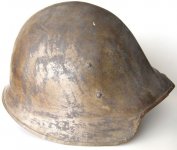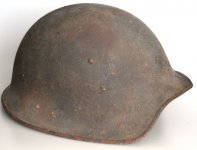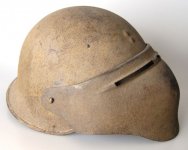BLReed
Sergeant Major
- Joined
- Nov 22, 2009
- Messages
- 1,676
http://www.foxnews.com/tech/slideshow/2015/05/01/10-historic-combat-helmets/?intcmp=ob_homepage_tech&intcmp=obnetwork#/slide/frenchexperimentalhelmets
French Experimental Helmets
From the 1890s to 1912 the French military considered a number of experimental helmets,
but all were rejected and never adopted into use

French Skull Cap
The first attempt to provide protection to a soldier's head came in early 1915 via a skull
cap that was meant to be worn under the kepi. It likely was so uncomfortable that it was
used as a mess bowl and gave rise to the myth that soldiers wore soup bowls for protection
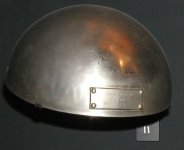
German Spike Helmet
The leather "pickelhaube" was introduced in the Prussian Army in the 1840s and remained
in use until 1916. This wartime example (Model 1915) featured removable spike and steel
hardware. In the trenches a cover was worn over the helmet.
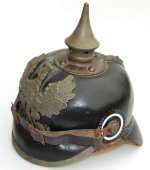
French Adrian Helmet
The Model 1915 was developed by Intendant-General August-Louis Adrian. It was based
on the Parisian firemen's helmets. This style helmet would be updated in 1926 and was
used throughout World War II.

British MkI
The British MkI helmet was based on a design by John L. Brodie, who based it on the medieval
"kettle hat" worn by the infantry. Like the French Model 1915 the British MkI was updated and
used throughout World War II. The pattern was also adopted by the American Expeditionary
Force as the Model 1917 and used until the beginning of the Second World War.

French Experimental Helmets
From the 1890s to 1912 the French military considered a number of experimental helmets,
but all were rejected and never adopted into use

French Skull Cap
The first attempt to provide protection to a soldier's head came in early 1915 via a skull
cap that was meant to be worn under the kepi. It likely was so uncomfortable that it was
used as a mess bowl and gave rise to the myth that soldiers wore soup bowls for protection

German Spike Helmet
The leather "pickelhaube" was introduced in the Prussian Army in the 1840s and remained
in use until 1916. This wartime example (Model 1915) featured removable spike and steel
hardware. In the trenches a cover was worn over the helmet.

French Adrian Helmet
The Model 1915 was developed by Intendant-General August-Louis Adrian. It was based
on the Parisian firemen's helmets. This style helmet would be updated in 1926 and was
used throughout World War II.

British MkI
The British MkI helmet was based on a design by John L. Brodie, who based it on the medieval
"kettle hat" worn by the infantry. Like the French Model 1915 the British MkI was updated and
used throughout World War II. The pattern was also adopted by the American Expeditionary
Force as the Model 1917 and used until the beginning of the Second World War.




